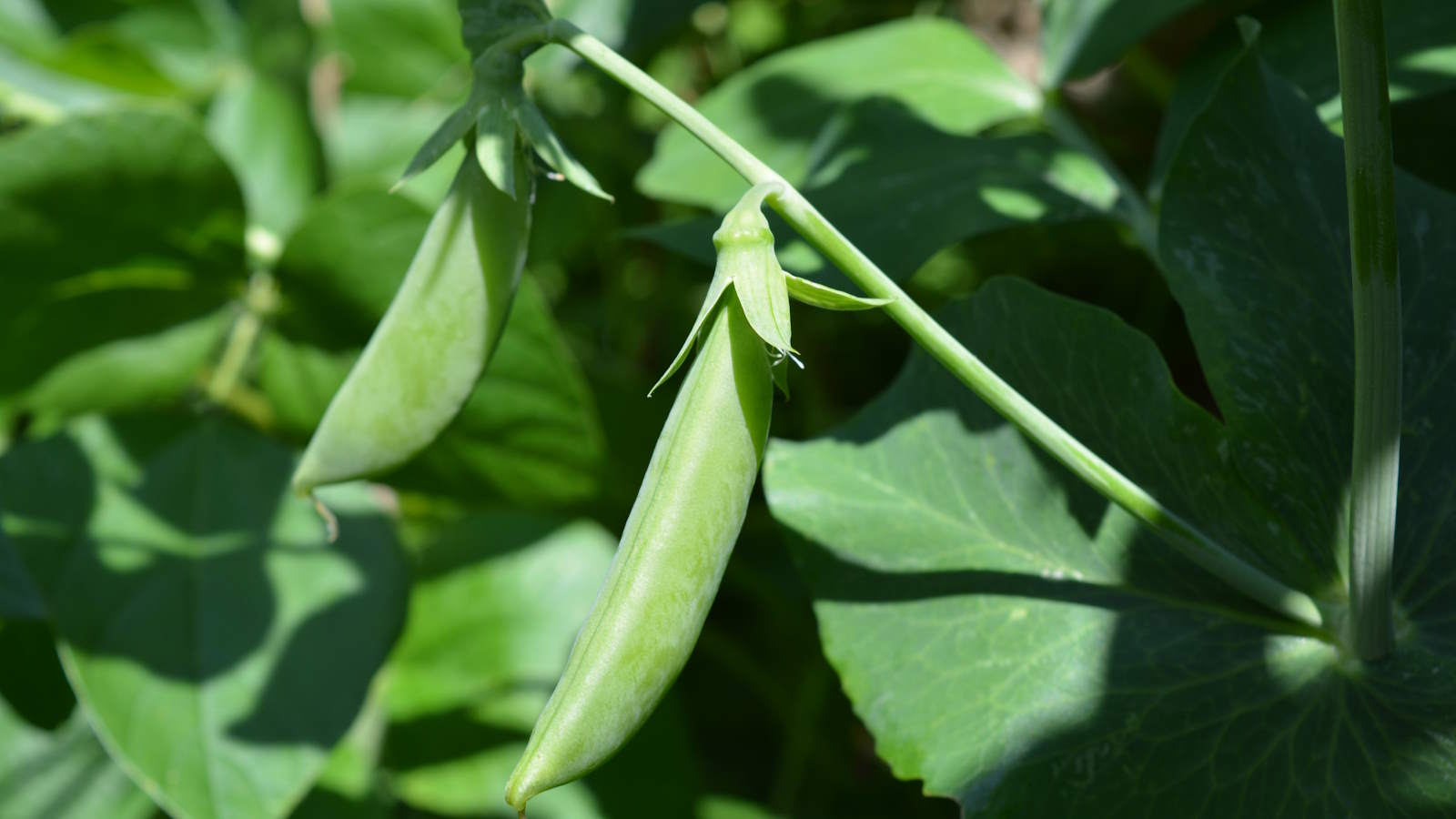
Sweet and crunchy sugar snap peas freshly picked from the plant are a real delicacy and taste far better than any you will get in stores. The crops are quick and simple to grow in the garden and you can get a great harvest for all your culinary uses - or to simply eat straight from the plant.
Sugar snap peas have smooth and rounded edible pods and the pods, complete with the peas inside, are eaten whole, either cooked or raw. They want to be harvested at the peak of their ripeness when they are sweet and juicy, as they can get tough and stringy if left on the plant too long.
There are many different varieties of sugar snap peas to grow, which can range in terms of the size of the plants and the size of the pods. I regularly grew sugar snap peas in the vegetable gardens I worked in as they were highly prized harvests for the chefs I grew for during the summer.
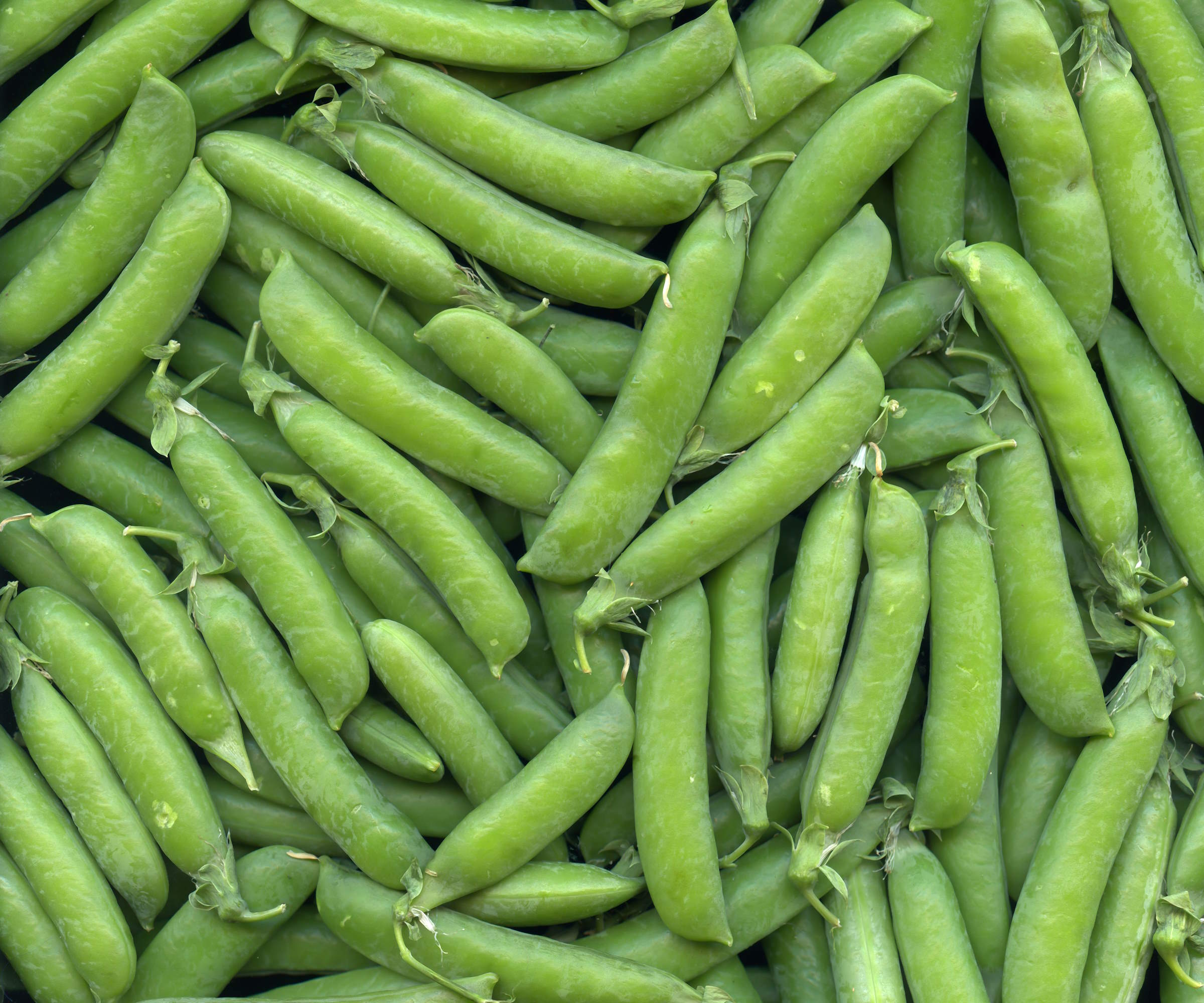
How do you grow sugar snap peas?
Sugar snap peas can be bought from nurseries, garden centers or online as young plants so you can plant the vegetables directly into your vegetable garden. The crop can easily be grown from seed at home too and there will be a wider range of varieties you can choose to grow by starting them from seed, indoors or outdoors.
How to grow sugar snap peas from seed
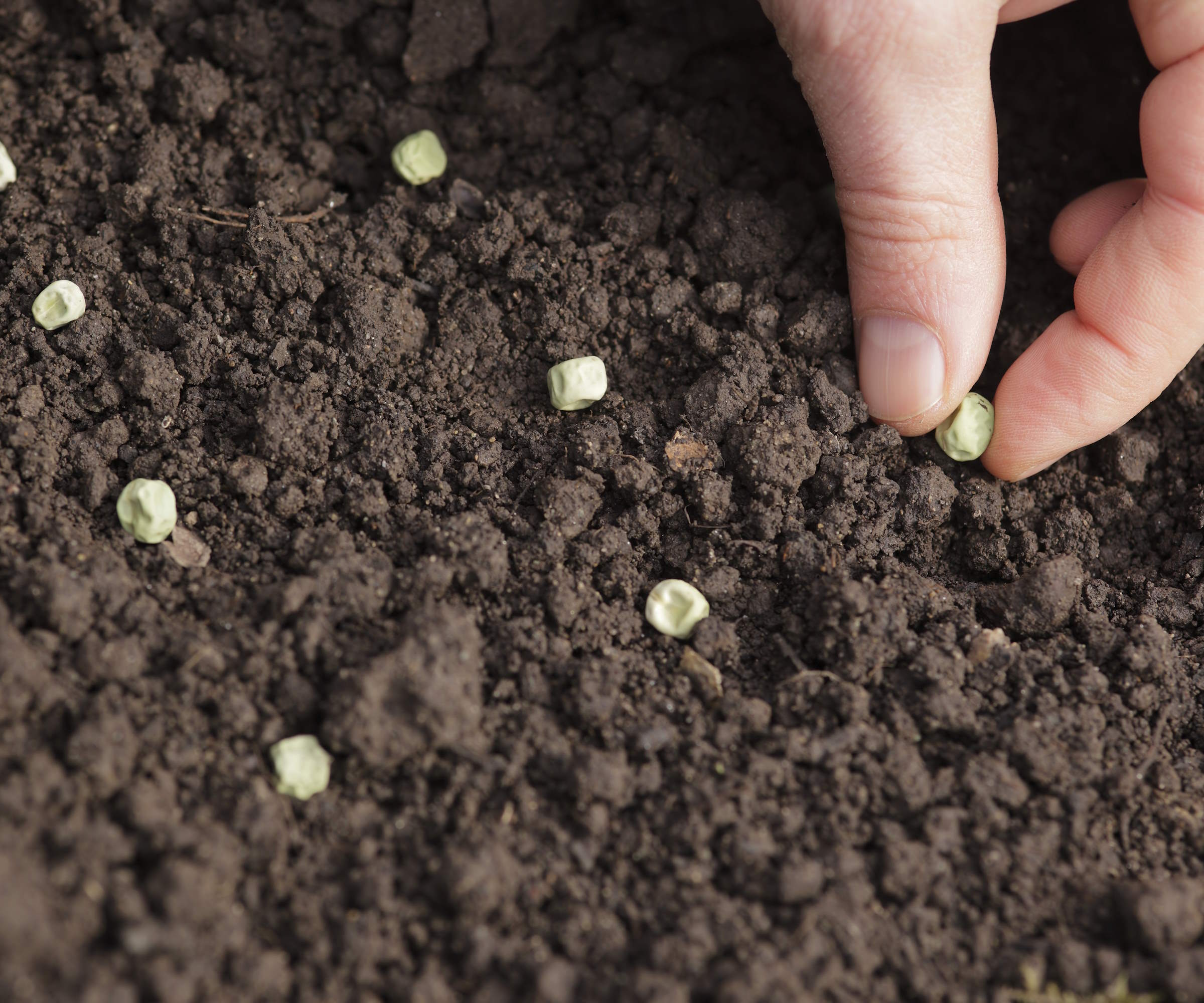
Sugar snap peas can be sown directly into the ground once the frosts have ended. The soil needs to have warmed up to at least a consistent 45°F in spring and the ground must be workable. The best time to plant will depend on your US hardiness zone but do not consider sowing seeds outdoors before the ground has warmed up sufficiently, as peas struggle to germinate in cold and wet soil.
The use of cloches or horticultural fleece can warm the soil to allow you to sow sugar snap peas earlier. To sow sugar snap peas directly into the kitchen garden, plant them around 1-2 inches apart and 1 inch deep in rows that are spaced 18-24 inches apart.
Before sowing your sugar snap peas, Charmaine Peters, the farm director at Arden, an Agrihood community in South Florida, recommends ‘coating your seeds with a nitrogen-fixing inoculant immediately before planting’.
She says: ‘An inoculant is a powdery substance made with live Rhizobium bacteria that can nourish your pea plants, allowing them to climb higher and produce more pods. You can buy nitrogen-fixing inoculants at garden centers, nurseries, or online.’
For earlier crops, you can sow seeds indoors by planting the vegetables from February onwards. Peas have fast-growing and deep root systems, so consider using large pots, root trainers, or cardboard inner tubes of toilet rolls to sow into. Keep the seeds somewhere warm, such as a greenhouse or sunny windowsill, and transplant seedlings into the garden once the temperatures increase.
To have a continual and steady supply of sugar snap peas, you can use succession planting and sow the crop every few weeks from spring through midsummer.
You can see the range of sugar snap pea seeds available at True Leaf Market
A nitrogen-fixing inoculant to improve the uptake of micro- and macro-nutrients for resilient plants and higher yields
Where and how to plant sugar snap peas
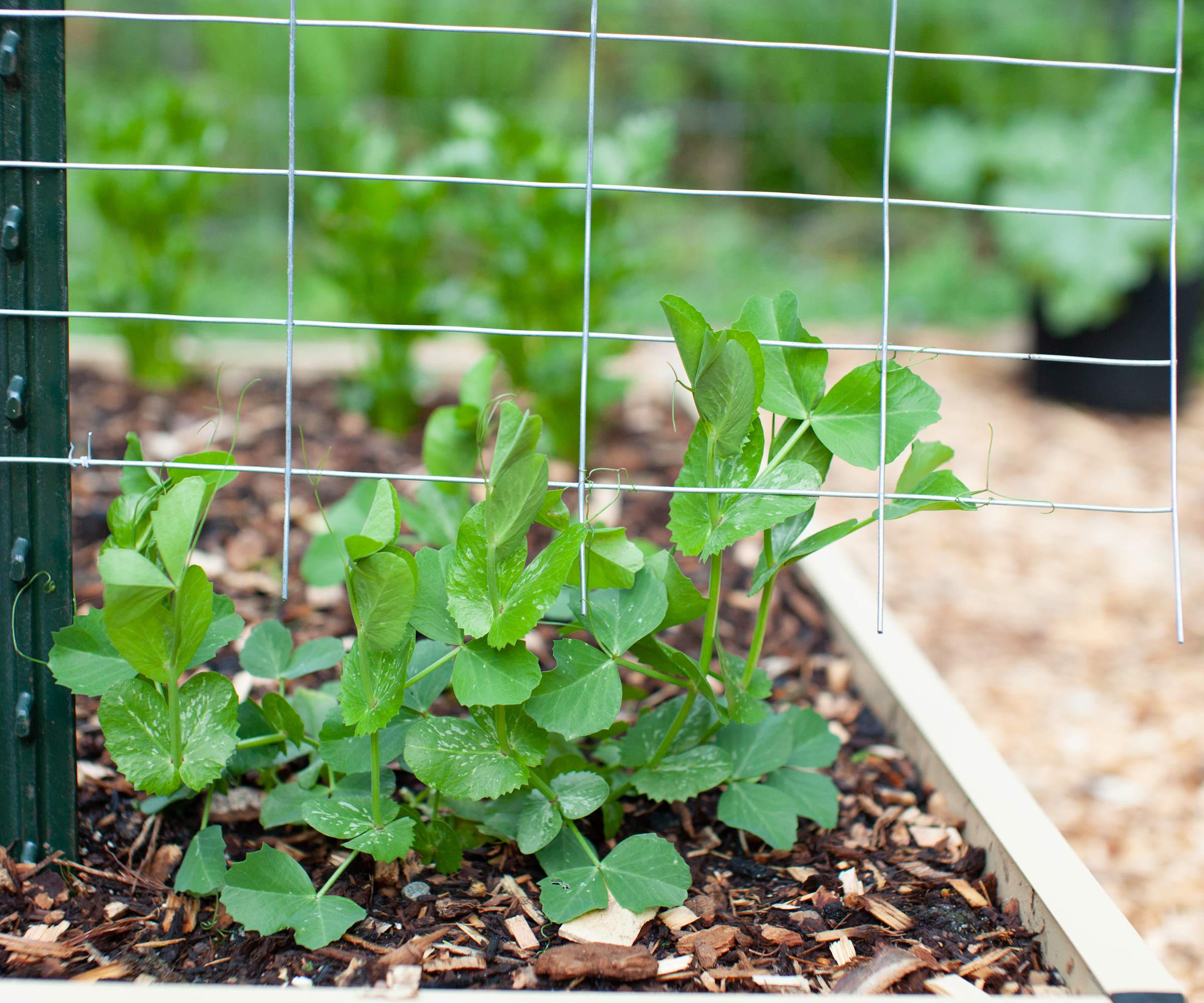
Plant sugar snap peas in a spot that gets six to eight hours of direct sunlight per day. They can tolerate some shade, but prefer full sun and shade can affect their flowering and yield. The crop prefers a soil type that is moist and well-draining, ideally with a pH level between 6.0 and 7.0.
Sugar snap peas are easy crops to grow in the ground, but are also well-suited to growing in raised beds or containers. Fill any planter with a fertile and well-draining potting mix and the crop will happily grow as part of any vegetable container garden.
Sugar snap peas are ideally suited for small vegetable garden ideas, thanks to their growth habit. Rebecca Sears, resident green thumb at Ferry-Morse, says: ‘Pea plants tend to grow vertically, so they’re ideal if you’re working with a smaller gardening space but still want to grow your own produce at home. Use a trellis to help support your pea plants as they grow.’
There are many different ways you can create a vegetable garden trellis to grow sugar snap peas. This includes making a rustic trellis, using arches or arbours, or using a basic frame with trellis netting for plants to climb. It is always recommended to have the frame in place at the time of planting, to avoid disturbing plants by installing it at a later date.
An easy-to-assemble arch trellis with a polyethylene-casing steel frame that is ideal for growing a range of climbing plants in a vegetable garden
How to care for sugar snap peas
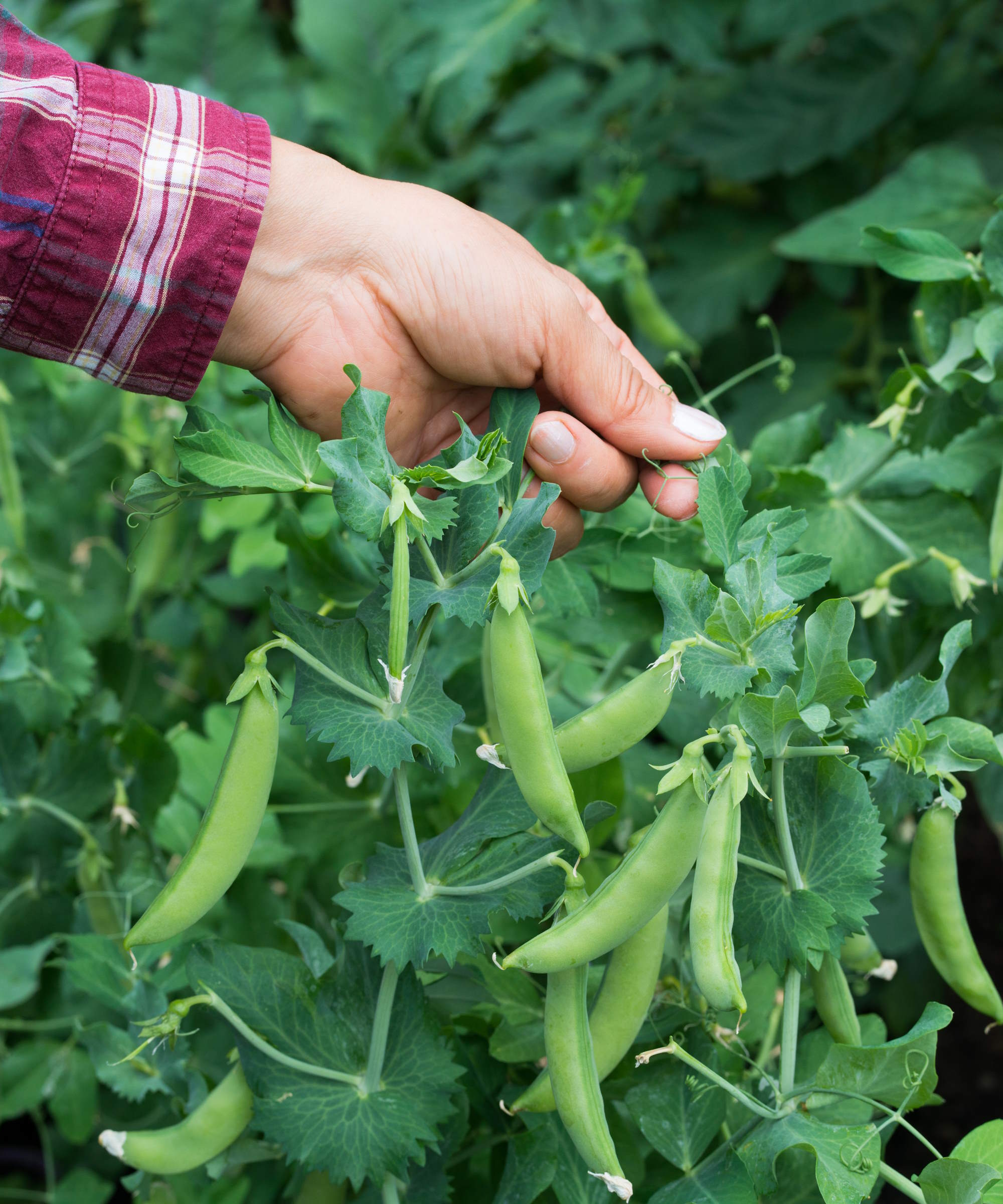
Sugar snap peas are simple crops to maintain. Keep the plants free of competition from weeds and regularly check for when to water plants. The crop wants the soil to remain consistently moist - this is particularly important during the germination stage if you sow the seeds directly. The plants ideally want 1-2 inches of water per week, whether it comes from nature or through irrigation by the gardener.
When it comes to how to water plants, make sure to water the soil and not the foliage. Pea plants are prone to airborne fungal diseases like powdery mildew and soaking the foliage will leave them highly susceptible.
If powdery mildew does become an issue on your plants, Charmaine Peters suggests one potential remedy and says: ‘I recommend a weekly spray with a 10 to 1 dilution of water to milk at the first signs of mildew on the lower leaves. Whole milk can be used.’
Sugar snap peas do not require additional fertilizer during the growing season if they are planted in fertile soil. They do benefit from mulching with organic matter after planting to retain moisture in the soil and maintain the soil temperature.
How to harvest sugar snap peas
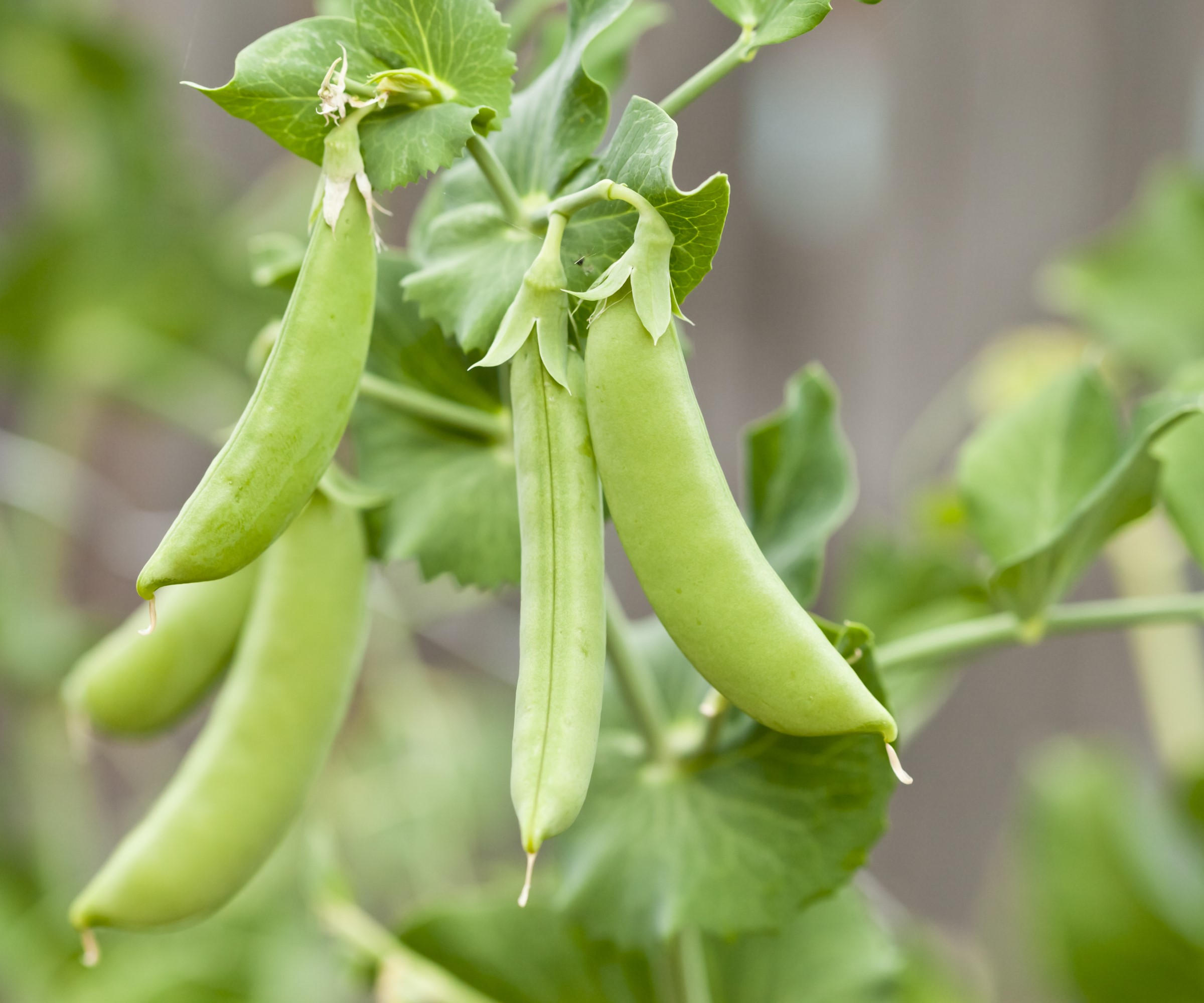
Sugar snap peas are fast-growing vegetables and the quickest cultivars can take just two months to go from sowing to being ready to harvest. The season to pick tends to start from June onwards, depending on when you sow the crop, and the peas want to be light green and plump. The peas inside should be visible and the pods themselves should easily snap in half.
Pick the sugar snap peas regularly as over-ripe pods can be stringy and tough. Charmaine Peters recommends ‘pick them at least every other day to make sure they are sweet and free of excess fibers’ and advises removing any overgrown pods.
You do want to harvest the peas with care. Rebecca Sears warns to ‘be careful not to jerk pods from vines’ as rough handling would be a vegetable harvesting mistake that can damage plants or even rip them completely out of the ground. Instead, she recommends: ‘It’s best to snip clusters of pods from the vines with a pair of snipping scissors.’
A pair of plant shears featuring a straight edge, a serrated edge, and a wire cutter ideal for a range of gardening tasks - including harvesting sugar snap peas
FAQs
Can you grow sugar snap peas indoors?
It is possible to grow sugar snap peas as part of any indoor garden ideas. The plants will need to grow in a very bright spot in the home where they can get six to eight hours of daylight. Alternatively, they may need to grow under lights as part of an indoor growing system to supplement the natural light. Shorter varieties of sugar snap peas are more suited to growing indoors and they can be sowed into a large container filled with a good quality potting mix.
It is beneficial to consider companion planting as peas make great partners for many other crops in the vegetable garden. For example, peas are fantastic for carrot companion planting, cucumber companion planting, and zucchini companion planting, among many others. Companion planting is a great method to help plants grow strongly and also prevent issues with pests and diseases.





!["[T]he First and Fifth Amendments Require ICE to Provide Information About the Whereabouts of a Detained Person"](https://images.inkl.com/s3/publisher/cover/212/reason-cover.png?w=600)

